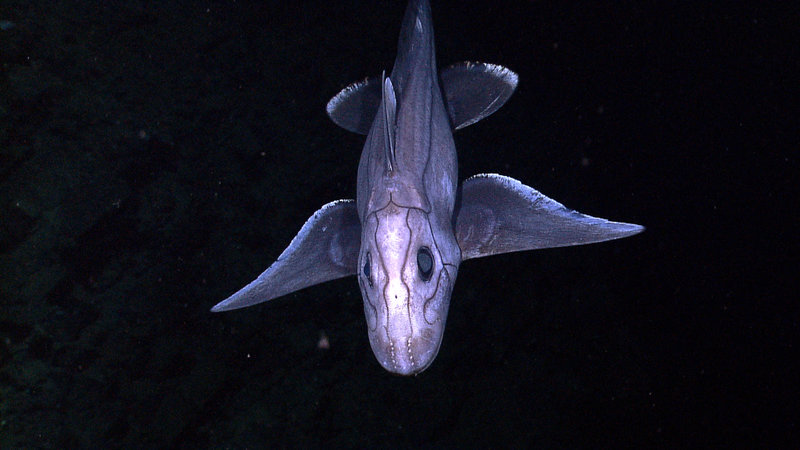August 23, 2020: Chimaera

Image courtesy of the NOAA Office of Ocean Exploration and Research, INDEX-SATAL 2010. Download larger version (jpg, 1.8 MB).
A deep-sea chimaera seen during the INDEX 2010: “Indonesia-USA Deep-Sea Exploration of the Sangihe Talaud Region” expedition.
Chimaeras are most closely related to sharks, although their evolutionary lineage branched off from sharks nearly 400 million years ago, and they have remained an isolated group ever since. Like sharks, chimaeras are cartilaginous and have no real bones. The lateral lines running across this chimaera are mechano-receptors that detect pressure waves (just like ears). The dotted-looking lines on the frontal portion of the face (near the mouth) are "ampullae de lorenzini" and they detect perturbations in electrical fields generated by living organisms.
From: Ocean Exploration: Embarking on New Voyages.